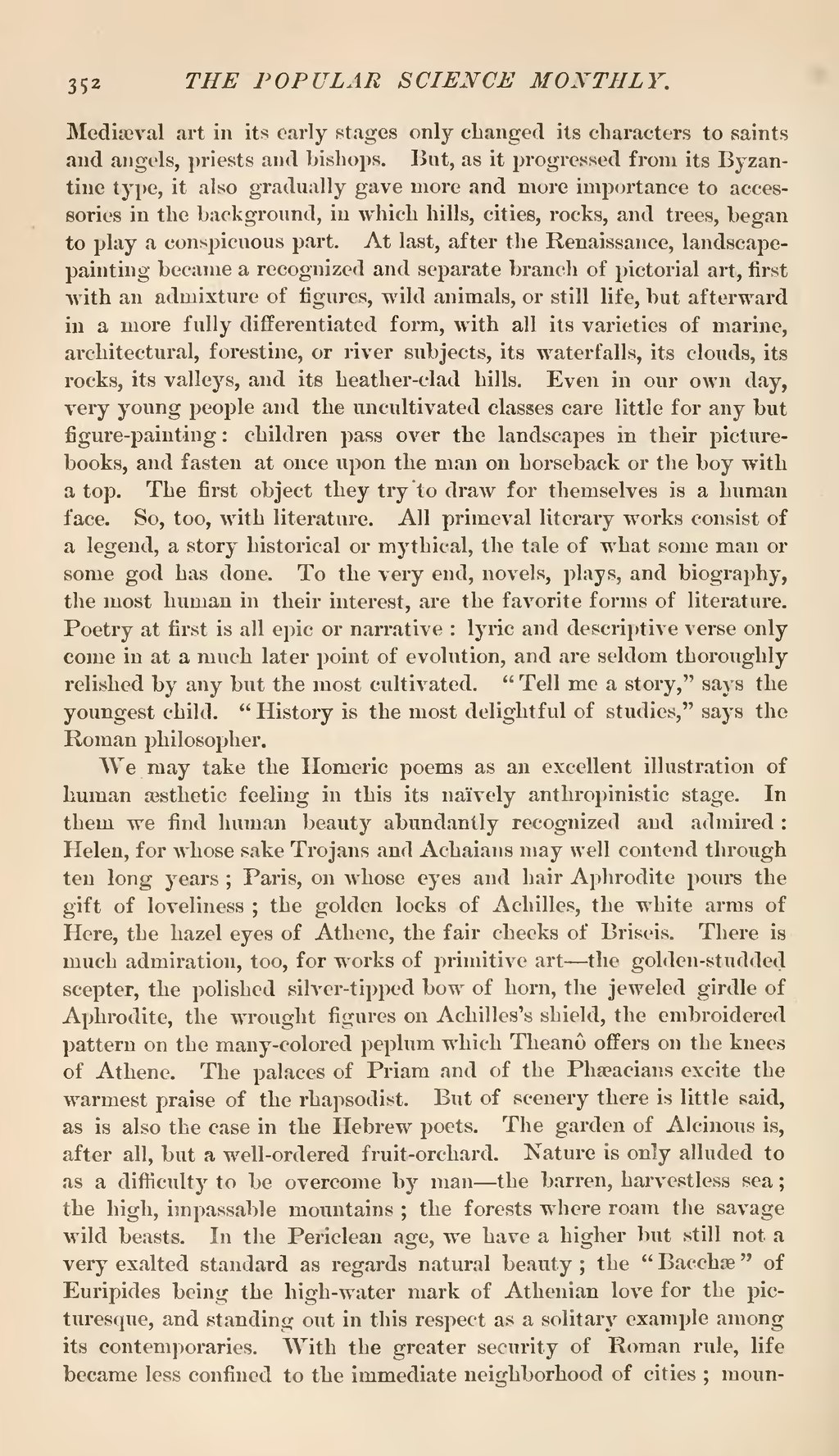Mediæval art in its early stages only changed its characters to saints and angels, priests and bishops. But, as it progressed from its Byzantine type, it also gradually gave more and more importance to accessories in the background, in which hills, cities, rocks, and trees, began to play a conspicuous part. At last, after the Renaissance, landscape painting became a recognized and separate branch of pictorial art, first with an admixture of figures, wild animals, or still life, but afterward in a more fully differentiated form, with all its varieties of marine, architectural, forestine, or river subjects, its waterfalls, its clouds, its rocks, its valleys, and its heather-clad hills. Even in our own day, very young people and the uncultivated classes care little for any but figure-painting: children pass over the landscapes in their picture books, and fasten at once upon the man on horseback or the boy with a top. The first object they try to draw for themselves is a human face. So, too, with literature. All primeval literary works consist of a legend, a story historical or mythical, the tale of what some man or some god has done. To the very end, novels, plays, and biography, the most human in their interest, are the favorite forms of literature. Poetry at first is all epic or narrative: lyric and descriptive verse only come in at a much later point of evolution, and are seldom thoroughly relished by any but the most cultivated. "Tell me a story," says the youngest child. "History is the most delightful of studies," says the Roman philosopher.
We may take the Homeric poems as an excellent illustration of human æsthetic feeling in this its naïvely anthropinistic stage. In them we find human beauty abundantly recognized and admired: Helen, for whose sake Trojans and Achaians may well contend through ten long years; Paris, on whose eyes and hair Aphrodite pours the gift of loveliness; the golden locks of Achilles, the white arms of Here, the hazel eyes of Athene, the fair cheeks of Briseis. There is much admiration, too, for works of primitive art—the golden-studded scepter, the polished silver-tipped bow of horn, the jeweled girdle of Aphrodite, the wrought figures on Achilles's shield, the embroidered pattern on the many-colored peplum which Theanô offers on the knees of Athene. The palaces of Priam and of the Phæacians excite the warmest praise of the rhapsodist. But of scenery there is little said, as is also the case in the Hebrew poets. The garden of Alcinous is, after all, but a well-ordered fruit-orchard. Nature is only alluded to as a difficulty to be overcome by man—the barren, harvestless sea; the high, impassable mountains; the forests where roam the savage wild beasts. In the Periclean age, we have a higher but still not a very exalted standard as regards natural beauty; the "Bacchæ" of Euripides being the high-water mark of Athenian love for the picturesque, and standing out in this respect as a solitary example among its contemporaries. With the greater security of Roman rule, life became less confined to the immediate neighborhood of cities; moun-

